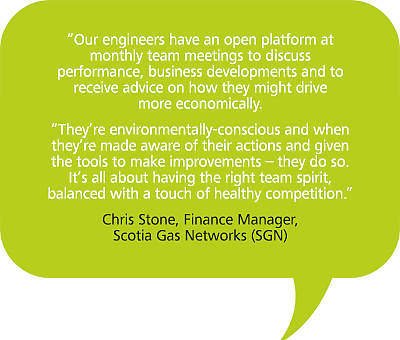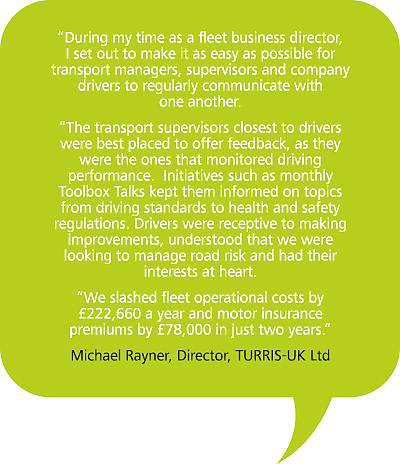Old habits really can die hard. An unwillingness to change and move with the times however can prove extremely costly for businesses.
For fleet managers, boosting driving performance standards has become recognised as one of the most effective ways of cutting fuel and maintenance costs, managing road risk and reducing motor insurance premiums.
But one of the biggest obstacles to achieving and sustaining these improvements is getting buy-in from drivers who are often resistant to change.
Driver motivation or engagement?
I have watched with interest companies monitoring employee driving styles and adopting both ‘carrot’ and ‘stick’ approaches to management in their efforts to improve performance.
Punishments for poor driving and incentives for improvement can both be said to have achieved a level of success. I firmly believe there’s a third way however – a more fruitful and sustainable approach.
Having recently taken time out to read Carrots and Sticks Don’t Work by psychologist Dr Paul Marciano, I’ve come to the conclusion it’s engagement, rather than motivation, that really holds the key to employees driving more efficiently and improving their mpg.
A spirit of collaboration
Dr Marciano’s RESPECT model, an acronym for seven principles of engagement, suggests motivation achieved by ‘carrot’ or ‘stick’ will only succeed in changing behaviour in the short-term. Real employee engagement is called for to bring about long-term change. If employees are not engaged, they will not be kept motivated.
A stick exists for both drivers and managers in the shape of the law to curb speeding and aggressive driving behaviour – however few enlightened managers believe punishing employees is the best way to get results. Collaboration should be the cornerstone of a company’s culture – rather than a hostile ‘them’ and ‘us’ philosophy.
Empowerment and recognition

This is where fleet management technology can come into its own, putting drivers at the heart of behaviour improvement by feeding live performance information back to their sat nav devices, in the form of audible and visual alerts, and enabling them to change their actions in real time.
League tables
Compiling and publicising league tables comparing the performance of individual drivers against their peers to spark healthy competition can be beneficial. These tables can be created using a simple scoring system automatically generated by your fleet management software, based upon mpg, incidents of speeding, idling and driving events such as harsh steering, acceleration and braking. League tables have been used to great effect by Zenith Hygiene Group, a company that managed to cut fuel costs by £222,660 a year across a 119-strong vehicle fleet.
Incentives
Occasional incentives, such as small rewards for drivers with the best mpg, can help but may not always be necessary – simple recognition and acknowledgement of their efforts can be equally effective.
What’s more, if employees truly understand that everyone prospers from improving fuel efficiency, and this message is communicated consistently, they are much more likely to improve their performance behind the wheel.
Sanctuary Maintenance, part of housing and care provider Sanctuary Group, has taken this approach – and has shown how fuel bills can be slashed by 25 per cent by doing so.
Clear communication
To ensure clear communication to its drivers, the company’s fleet management team has toured the UK with a roadshow to clarify any misunderstandings and to explain the benefits of a better driving style, both to the business and to employees.

After all, controlling costs and making bottom line savings protects a company’s financial future, helping ensure job and wage security and a better working environment for all.
Positive feedback
By offering positive feedback on driving style, as well as constructive criticism where required, employees will be encouraged to tell their colleagues. If they are given negative feedback, they will usually keep it to themselves. By creating a culture of collaboration and positive reinforcement, the good guys will give their fellow drivers something to aspire to and everyone will strive to pull in the same direction.








